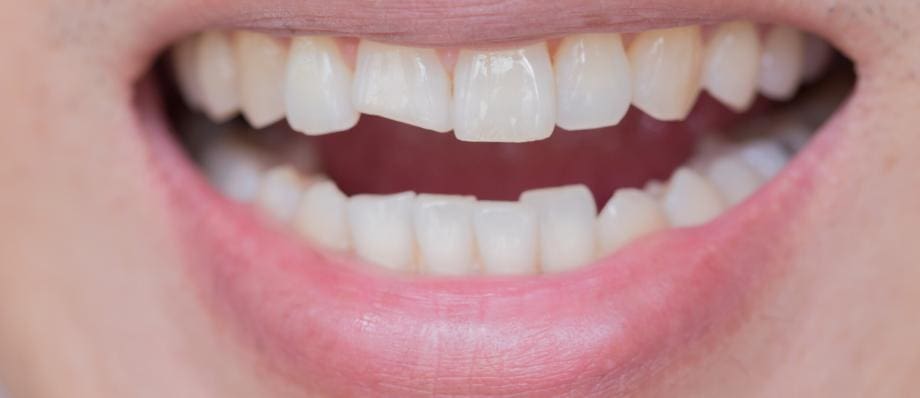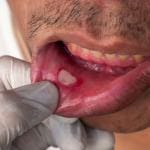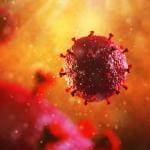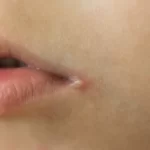The teeth are essential structures that play a vital role in biting, chewing, and speaking. However, they are not immune to damage, and various factors can lead to a broken tooth, chipped or cracked tooth. These dental injuries can cause pain, discomfort, and functional limitations, and may require prompt dental intervention to prevent further complications. In this comprehensive article, we will explore the causes, symptoms, diagnosis, treatment, and prevention of broken tooth, chipped or cracked tooth.
Causes of Broken Tooth, Chipped or Cracked Tooth
There are several common causes of broken tooth, chipped or cracked tooth including:
- Trauma
- Biting on hard objects
- Teeth grinding (bruxism)
- Tooth decay
- Age-related wear and tear
- Previous dental restorations
- Structural abnormalities
Trauma
Dental trauma is a common cause of broken tooth, chipped or cracked tooth. It can result from accidents such as falls, sports injuries, or motor vehicle accidents. Trauma can cause direct impact or force on the teeth, leading to fractures or breakages.
Biting on hard objects
Biting on hard objects, such as ice, hard candies, or pens, can cause teeth to chip or crack. Teeth are designed to withstand the forces of chewing on soft foods, and biting on hard objects can exceed their strength, leading to dental injuries.
Teeth grinding (bruxism)
Bruxism, which is the habit of grinding or clenching the teeth, can cause excessive forces on the teeth, leading to cracks or fractures. Bruxism often occurs during sleep and can go unnoticed, but its effects on teeth can be significant over time.
Tooth decay
Tooth decay weakens the structure of the tooth, making it more susceptible to fractures or breakages. Large cavities or weakened tooth enamel can compromise the integrity of the tooth, leading to chipping or cracking.
Age-related wear and tear
As we age, our teeth naturally undergo wear and tear from years of use. This can result in weakened enamel and increased risk of chipping or cracking.
Previous dental restorations
Teeth that have been previously restored with fillings, crowns, or other dental restorations may be more vulnerable to fractures or breakages. Over time, these restorations may weaken or fail, leading to damage to the tooth structure.
Structural abnormalities
Teeth with structural abnormalities, such as enamel hypoplasia (thin or weak enamel), can be more prone to chipping or cracking due to their weakened structure.
Symptoms of Broken Tooth, Chipped or Cracked Tooth
The symptoms of a broken tooth, chipped or cracked tooth may vary depending on the severity and location of the injury. Common symptoms include:
- Pain
- Sensitivity
- Swelling
- Bleeding
- Rough edges or sharp fragments
- Changes in tooth color
- Difficulty in biting or chewing
Pain
Pain may be experienced when biting or chewing, or even when the tooth is at rest. The severity of the pain can range from mild to severe, depending on the extent of the injury.
Sensitivity
Sensitivity to hot or cold foods or beverages may be experienced in a broken tooth, chipped or cracked tooth. The sensitivity can be localized to the affected tooth and may be triggered by temperature changes.
Swelling
Swelling of the gums or face near the affected tooth may occur if the tooth injury is severe. Swelling may be a sign of infection or inflammation.
Bleeding
If the tooth injury involves damage to the gums or soft tissues, bleeding may occur. Bleeding can be a sign of a more severe injury and may require immediate dental attention.
Rough edges or sharp fragments
A broken tooth, chipped or cracked tooth may have rough edges or sharp fragments that can cause discomfort or pain in the mouth.
Changes in tooth color
In some cases, a broken tooth, chipped or cracked tooth may change color, appearing darker or discolored compared to the surrounding teeth. This can be an indication of internal damage to the tooth.
Difficulty in biting or chewing
If a tooth is broken, chipped, or cracked, it may cause difficulty in biting or chewing properly. This can affect the individual’s ability to eat comfortably and may lead to avoidance of certain foods.
Diagnosis of Broken, Chipped, Cracked Teeth
If a broken, chipped, or cracked tooth is suspected, it is important to seek dental evaluation and diagnosis promptly. A dentist will typically perform a thorough examination of the affected tooth, along with taking a detailed dental and medical history. The dentist may also use various diagnostic tools to evaluate the extent of the injury, which may include:
- Visual inspection
- Dental X-rays
- Transillumination
- Bite test
- Sensitivity testing
Visual inspection
The dentist will visually inspect the tooth for any visible signs of damage, such as cracks, fractures, or breaks. They may use a dental mirror and a bright light to get a clear view of the tooth and its surrounding structures.
Dental X-rays
Dental X-rays may be taken to assess the extent of the tooth injury. X-rays can reveal fractures or cracks that may not be visible to the naked eye and help the dentist determine the appropriate treatment approach.
Transillumination
Transillumination is a technique in which a light is directed through the tooth to check for any internal fractures or cracks. This can help the dentist identify hidden cracks or fractures that may not be visible on the surface.
Bite test
The dentist may perform a bite test to check for any discrepancies in the way the teeth come together when biting down. This can help identify if the broken tooth, chipped or cracked tooth is affecting the patient’s bite and chewing function.
Sensitivity testing
The dentist may use various methods to test the sensitivity of the tooth, such as applying cold air, hot or cold liquids, or gentle pressure. Sensitivity testing can help determine the extent of nerve involvement and the severity of the tooth injury.
Treatment of Broken Tooth, Chipped or Cracked Tooth
The appropriate treatment for a broken, chipped, or cracked tooth will depend on the severity and location of the injury, as well as the overall dental health of the individual. Treatment options may include:
- Dental bonding
- Dental veneers
- Dental crowns
- Root canal treatment
- Dental implants
- Dental splints
- Tooth extraction
- Pain management
Dental bonding
Dental bonding is a cosmetic dental procedure in which tooth-colored resin material is applied to the broken tooth, chipped or cracked tooth and reshaped to restore its shape and appearance. Dental composite is typically used for minor tooth injuries and can provide a quick and cost-effective solution.
Dental veneers
Dental veneers are thin shells of porcelain or composite material that are custom-made to fit over the front surface of the tooth. They can be used to restore the appearance of a broken tooth, chipped or cracked tooth, and provide a natural-looking and durable solution.
Dental crowns
Dental crowns are tooth-shaped caps that are placed over a damaged tooth to protect it and restore its strength, shape, and appearance. Crowns may be used for more extensive tooth injuries or when the tooth has undergone root canal treatment.
Root canal treatment
If a broken tooth, chipped or cracked tooth involves damage to the nerve or pulp of the tooth, a root canal treatment may be necessary. Root canal treatment involves removing the damaged nerve tissue, cleaning and disinfecting the tooth’s interior, and sealing it with a dental filling or crown.
Dental implants
In cases where a broken, chipped, or cracked tooth cannot be restored, extraction of the tooth may be necessary. Dental implants are a popular option for replacing missing teeth, and they can provide a long-term and durable solution.
Dental splints
Dental splints are used to stabilize teeth that have been loosened due to a tooth injury. Splints are typically made of wire or resin material and are bonded to the loose tooth and adjacent teeth to immobilize the tooth and allow it to heal properly.
Tooth extraction
In cases where the broken, chipped, or cracked tooth is severely damaged and cannot be restored, tooth extraction may be necessary. This may be followed by other restorative options such as dental implants, bridges, or dentures to replace the missing tooth and restore the function and appearance of the mouth.
Pain management
Depending on the severity of the tooth injury, pain management may be necessary. Over-the-counter pain medications such as acetaminophen or ibuprofen may be recommended to manage mild to moderate pain. For more severe pain, the dentist may prescribe stronger pain medications.
Prevention of Broken, Chipped, and Cracked Teeth
Preventing broken tooth, chipped or cracked tooth can largely be achieved by following good oral hygiene practices and avoiding certain habits that may increase the risk of tooth injuries. Some preventive measures include:
- Regular dental check-ups
- Wear mouthguards during sports and physical activities
- Avoid biting or chewing on hard objects
- Avoid using teeth as tools
- Practice proper oral hygiene
- Seek treatment for dental issues promptly
- Wear a nightguard if you have bruxism
- Regular dental check-ups
Regular dental check-ups and cleanings can help detect early signs of tooth damage and prevent further progression. Dentists can provide guidance on proper oral hygiene practices and identify any risk factors that may increase the chances of tooth injuries.
Wear mouthguards during sports and physical activities
Mouthguards are protective devices that can help prevent dental injuries during sports and physical activities. Custom-fitted mouthguards provided by a dentist are typically more effective in protecting the teeth compared to over-the-counter mouthguards.
Avoid biting or chewing on hard objects
Avoid biting or chewing on hard objects such as ice, hard candies, pens, or pencils, as this can increase the risk of tooth fractures or chips. Cut food into smaller, manageable pieces before biting down, especially on hard or tough foods.
Avoid using teeth as tools
Avoid using your teeth as tools to open bottles, tear open packages, or perform other non-food-related tasks. Teeth are meant for chewing and biting food, and using them for other purposes can increase the risk of tooth injuries.
Practice proper oral hygiene
Brush your teeth at least twice a day with fluoride toothpaste, floss daily, and rinse with mouthwash to maintain good oral hygiene. This can help keep your teeth strong and healthy, reducing the risk of tooth injuries.
Seek treatment for dental issues promptly
If you have any dental issues such as cavities, gum disease, or malocclusion, seek treatment promptly. These issues can weaken the teeth and increase the risk of tooth injuries if left untreated.
Wear a nightguard if you have bruxism
If you grind or clench your teeth during sleep, known as bruxism, wearing a nightguard can help protect your teeth from damage. A nightguard is a custom-fitted device that is worn over the teeth during sleep to cushion the impact of grinding or clenching.
Conclusion
Broken tooth, chipped or cracked tooth can be painful and distressing, but with proper diagnosis and treatment, most cases can be effectively managed. It is essential to seek dental evaluation promptly if a tooth injury is suspected to prevent further damage and ensure timely treatment. Prevention through good oral hygiene practices, wearing protective devices such as mouthguards during physical activities, avoiding hard or harmful habits, and seeking prompt treatment for dental issues can help reduce the risk of broken, chipped, and cracked teeth. Regular dental check-ups and professional guidance can also play a crucial role in maintaining oral health and preventing tooth injuries. Remember, a healthy smile starts with a healthy tooth, so take care of your teeth and seek professional dental care as needed.






UNISDA SELALU DI DEPAN
4 December 2023This is really interesting, You’re a very skilled blogger. I’ve joined your feed and look forward to seeking more of your magnificent post. Also, I’ve shared your site in my social networks!